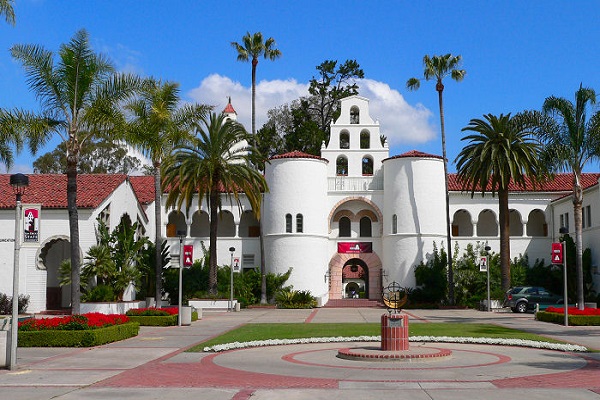San Diego State University: For Budding Filmmakers, English Course Opens a Window to Diverse Perspectives
Students dreaming of writing and directing films have a chance to learn from an award-winning independent film director, Ran Tal, who is co-teaching a screenwriting course.
A visiting artist in the Jewish Studies program at SDSU, Tal will teach Techniques of Screenwriting (ENGL-577) with another Israeli visiting artist, Matan Yair, an award-winning screenwriter and filmmaker.
Tal is head of the MFA documentary film program at The Steve Tisch School of Film and Television at Tel Aviv University International, teaching cinema in its film department and at Sapir College near the Gaza border. He has made more than 10 films and documentaries focused on Israeli reality through a historic social perspective. His most recent documentary, “1341 Frames of Love and War,” won three major film awards in Israel following its release in February.
This is his first time teaching in the U.S. and he looks forward to holding profound conversations about art with his students. He is curious to know how students will respond.
“It will be a process, taking students from reality to fiction in the two sections of the course,” Tal said.
Tal will teach about nonfiction and Yair will teach fiction to give students a depth of understanding of both genres. Students will build fiction scenes after doing their research in Tal’s nonfiction section of the course.
“I hope students will understand the richness and endless possibilities that they have in non-fiction cinema in order to appreciate it,” Tal said. “When they write their own films, they have the ability to observe what is happening around them. I hope it will be inspiring.
“Sometimes the best stories are around the corner, but they are so small it is difficult to understand how beautiful and complicated they are,” Tal added. He recommends students looking for story ideas go outside their comfort zone and start to look at other people and communities to see what they have to offer in terms of story and understanding and “to open a window.”
Students will be asked to interview characters around them — to write questions, conduct and possibly film interview sessions. Another assignment will have students take a news story and turn it into an idea for a film. “The information from the media could be a seed for something much, much bigger,” Tal said.
Yair will help students begin the screenwriting process by using the research materials completed in Tal’s section of the course.
“Come with an open mind and let’s have some fun! It’s writing, it’s art, it’s not supposed to be suffering,” Tal said.
Students dreaming of writing and directing films have a chance to learn from an award-winning independent film director, Ran Tal, who is co-teaching a screenwriting course.
A visiting artist in the Jewish Studies program at SDSU, Tal will teach Techniques of Screenwriting (ENGL-577) with another Israeli visiting artist, Matan Yair, an award-winning screenwriter and filmmaker.
Tal is head of the MFA documentary film program at The Steve Tisch School of Film and Television at Tel Aviv University International, teaching cinema in its film department and at Sapir College near the Gaza border. He has made more than 10 films and documentaries focused on Israeli reality through a historic social perspective. His most recent documentary, “1341 Frames of Love and War,” won three major film awards in Israel following its release in February.
This is his first time teaching in the U.S. and he looks forward to holding profound conversations about art with his students. He is curious to know how students will respond.
“It will be a process, taking students from reality to fiction in the two sections of the course,” Tal said.
Tal will teach about nonfiction and Yair will teach fiction to give students a depth of understanding of both genres. Students will build fiction scenes after doing their research in Tal’s nonfiction section of the course.
“I hope students will understand the richness and endless possibilities that they have in non-fiction cinema in order to appreciate it,” Tal said. “When they write their own films, they have the ability to observe what is happening around them. I hope it will be inspiring.
“Sometimes the best stories are around the corner, but they are so small it is difficult to understand how beautiful and complicated they are,” Tal added. He recommends students looking for story ideas go outside their comfort zone and start to look at other people and communities to see what they have to offer in terms of story and understanding and “to open a window.”
Students will be asked to interview characters around them — to write questions, conduct and possibly film interview sessions. Another assignment will have students take a news story and turn it into an idea for a film. “The information from the media could be a seed for something much, much bigger,” Tal said.
Yair will help students begin the screenwriting process by using the research materials completed in Tal’s section of the course.
“Come with an open mind and let’s have some fun! It’s writing, it’s art, it’s not supposed to be suffering,” Tal said.

